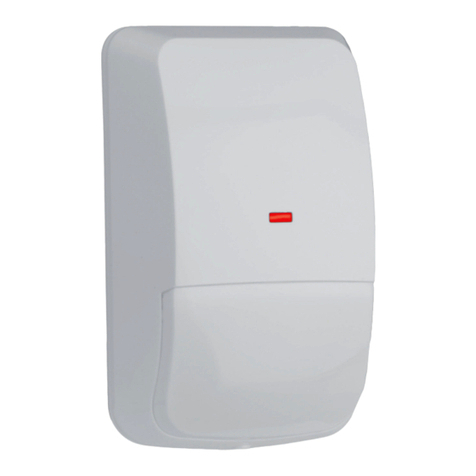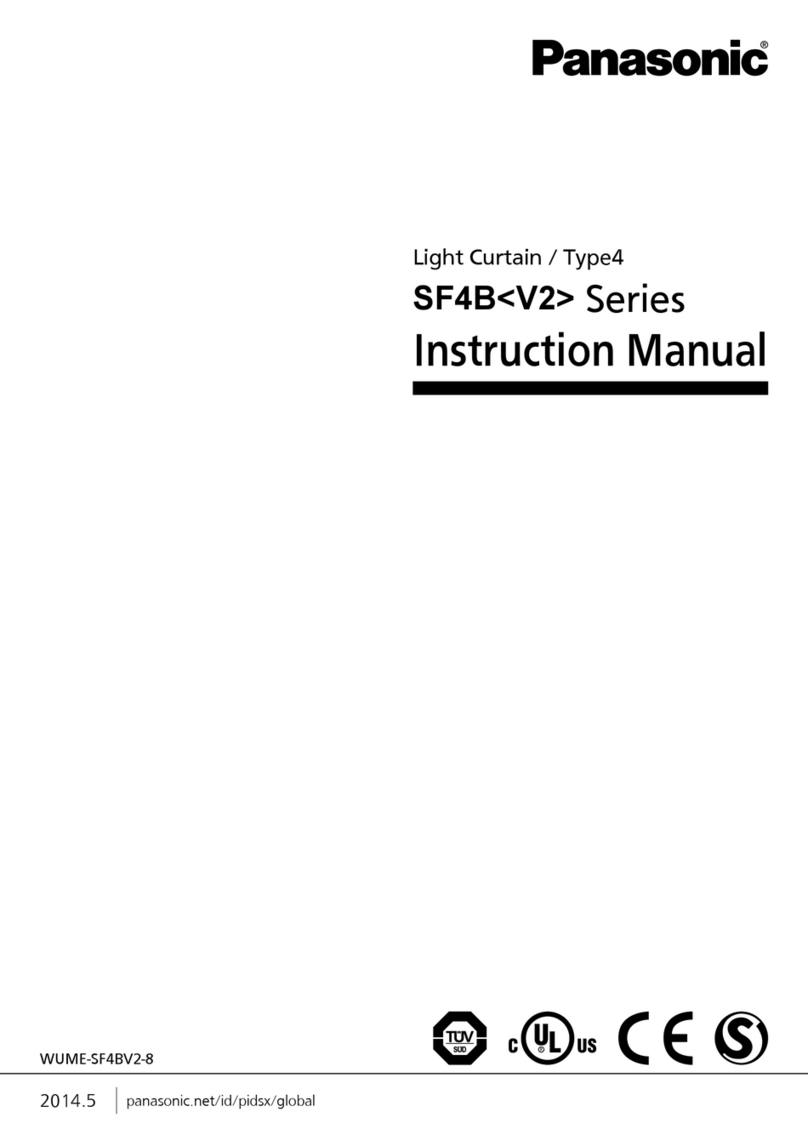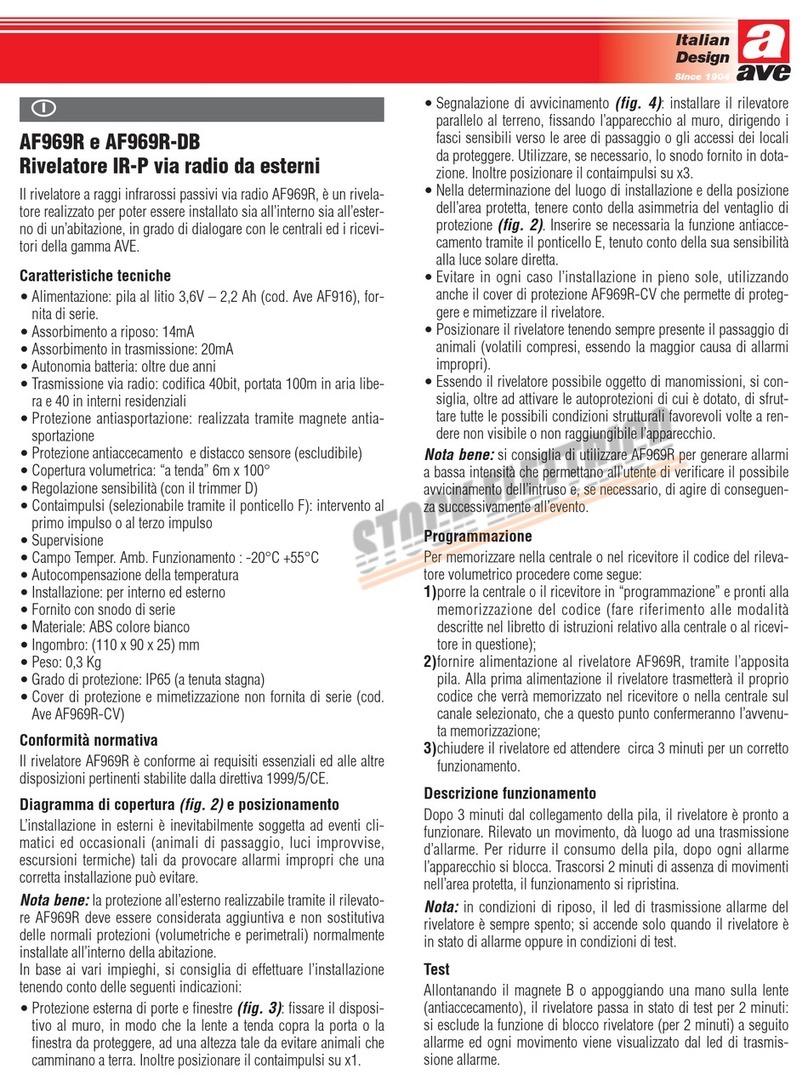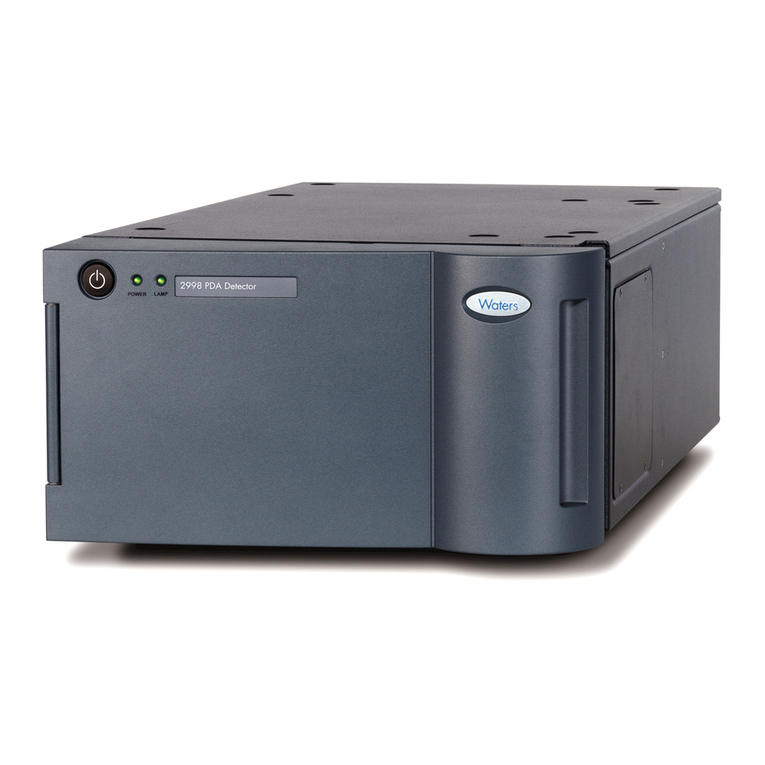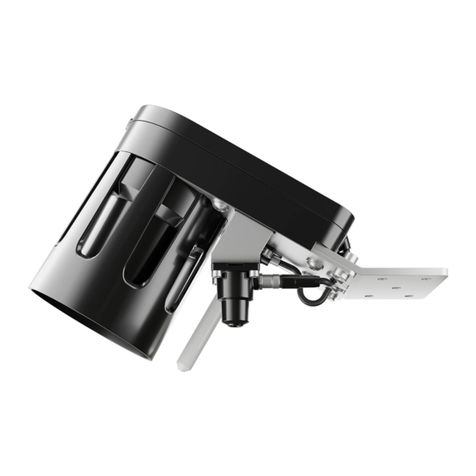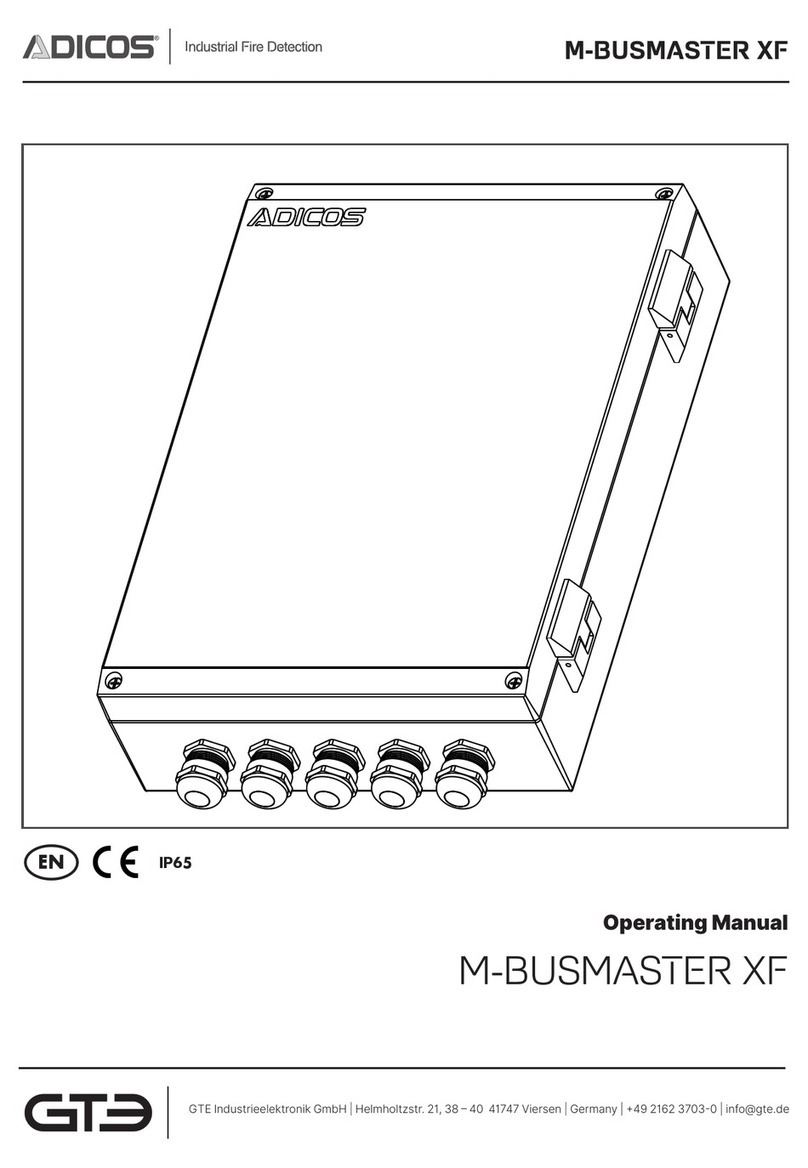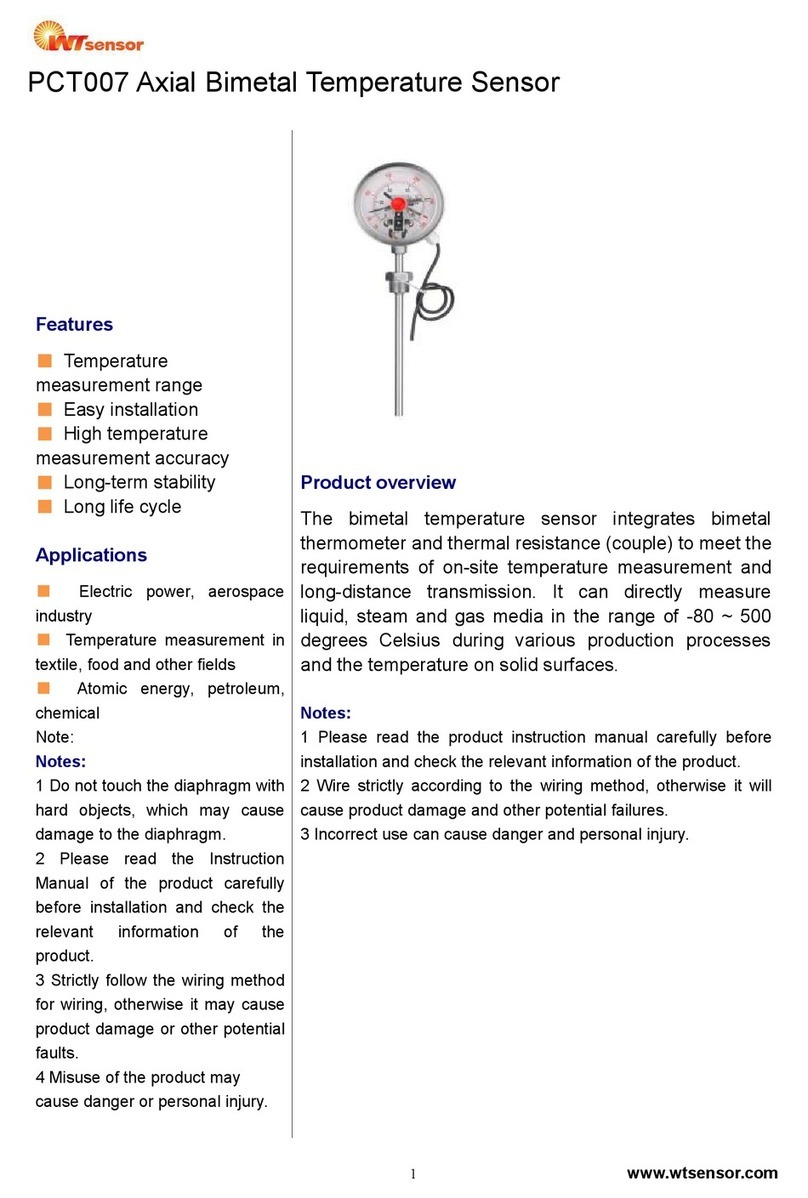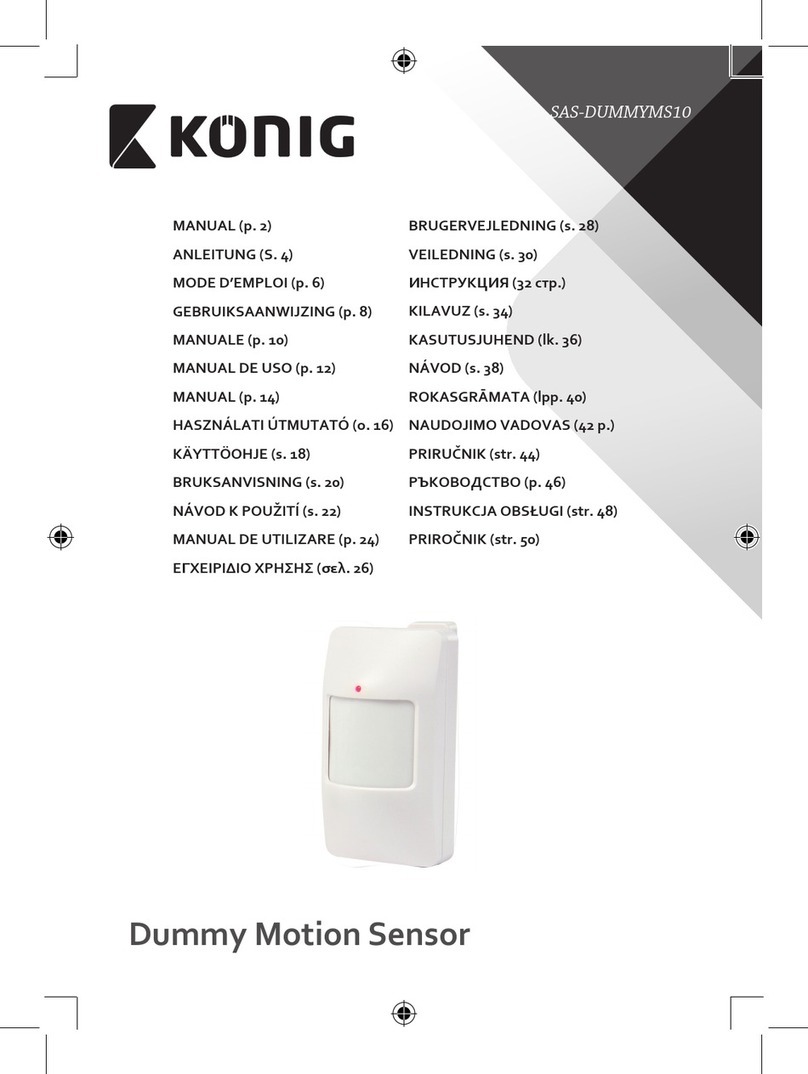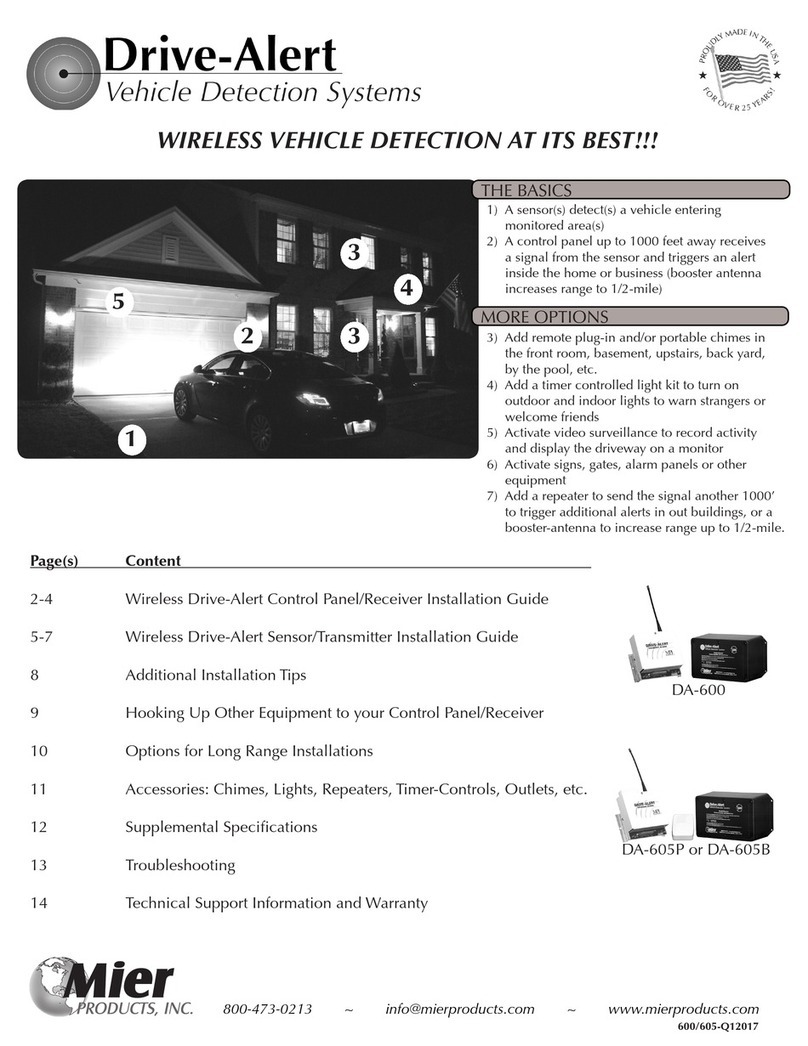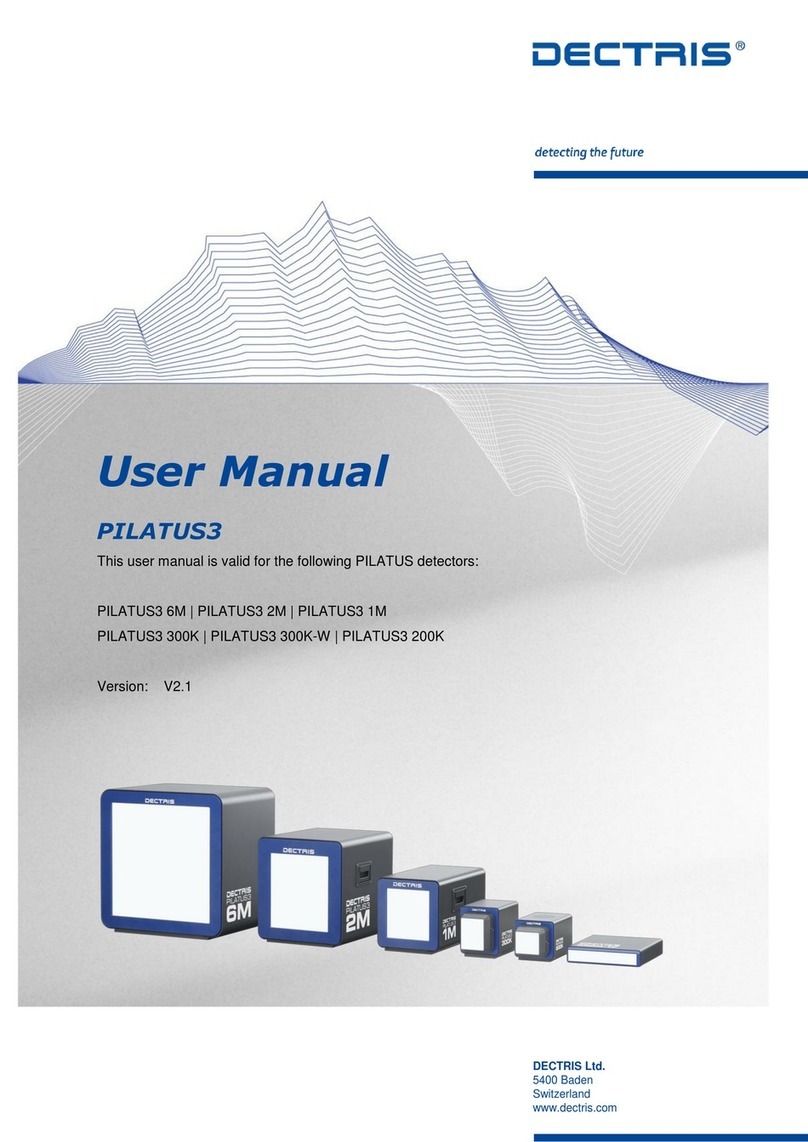GDI GOLD X-FINDER User manual

1
Long Range Locator
Version 3. Firmware v1.06 - May 2022
X-FINDER youtube video guide: https://youtu.be/WkRnv9HlUDo
users unexperienced to similar devices please note the conditions of operation at pages 2,3 & 4

2
Τhank you for your purchase of the GOLD X-FINDER distant locator by GDI - Gold Detectors International.
As a manufacturer we have invest a long time in research and development and have taken all efforts
to produce a quality locator of this type, that has not an equal to the treasure hunting market.
This is a scientific instrument and every detail in the instruction manual has to be followed.
It is strongly suggested to study the instruction manual carefully in order to understand the operation
of your X-FINDER and then to field practice with sample targets to gain a level of experience.
Like an electronic device the X-FINDER must be handled with care necessary when operating such devices.
Special care has to be taken with the antenna that must be handled gently, avoid bending, avoid hits
and any excessive force when assembling it. We wish to you the best in your surveys.
ASSEMBLY
Inside the carry case, secured in foam dividers comes the main unit, telescopic antenna, handle and 4 x AA
batteries. Pull the battery door and position the batteries in the correct order, according the indications.
Extend the antenna to the desirable length and screw it carefully to the base.
Last, attach and screw the handle below the locator.
POWER ON
The locator will power on automatically once the handle has been attached.
By pressing any key a low beep sound aids as confirmation for the command.
DETECTION CONDITIONS
Avoid the usage of the locator in the rain, or under lighting strikes. Use it next day after the rain.
It is beneficial to have a relative moist soil but not a muddy one. Select days with a clear sky or sparse
clouds. Power off mobile phones. Do not keep other individuals in a close proximity. Do not approach
power lines, high voltage towers or electromagnetic transmitters (mobile phone antennas, Wi-Fi etc).
The efficient hours of the day are either morning or afternoon but not in the strong sunlight.
Do not detect under windy conditions. Temperatures below 8, and higher than 33 C are not ideal.
In the heat the attraction of the target becomes faster, while it slows down in cold.

3
LOCATION POSITION
Hold the locator by the handle. The locator has to be kept
with the main unit parallel to the ground and in right angle
to the user body. The antenna slightly declined to the ground.
Maintain the elbow close to your body but not tight.
Do not move or force the handle. Spend some time practicing
until the correct handling has been achieved and the locator
is balanced.
TARGET DETECTION PROCEDURE
Readings can be taken when standing still or by scanning using your elbow to sweep the locator left to right
towards the horizon.
Users that have before practiced electronic dowsing do not have any difficulty using X-FINDER.
Before testing about the target signal using samples, experiment holding and walking with the X-FINDER
without using any target, outdoors away from metal and electromagnetic interference, and the X-FINDER
unit itself powered off.
Balancing is a common fault with new users of such devices, as the antenna need to be balanced while
the device is swept left to right, by holding the handle gently, not hold by applying force with your fingers
to the handle, but rather let it balance free within your hand. The purpose is to take the time to use
X-FINDER powered off, and practice sweeps from right to left on your horizon, with the arm at about
90 degrees, so that you accomplish the balance and the antenna does not “move around” by itself,
when you end the sweep and reverse for example to the other direction.
The must for balance is to have to antenna tip a little declined.
The antenna should be balanced naturally without any effort and stay balanced when it comes to either
end of your sweep. Once this is accomplished, practice sweeping at a normal speed,
not very slow as a stop and go action but a sweep at a constant movement.
Secondly lay sample targets over the ground surface (outdoors as house has a lot many metals and
electromagnetic interference, not inside nylon, plastic or any insulating material), as to be visible by you,
if possible poor a little water over the sample. Let the X-FINDER operate and perform ground balance
at your horizon away from the sample. Then sweep over the sample direction and actually sense
the antenna lock over it and stays locked when you continue your sweep movement progressively
to the left or to the right of the target. This is a must before contacting other tests.
To experience what the signal feels like, and if you get no signal from this test, take care of the below:
At this point, when practice with sample targets, any user will find the circumstances under which he gets
a strong signal. Experiment with (a constant and not a stop and go again) sweep speed, and angle you are
maintaining the antenna to the ground surface, as long as it is dropped a bit downwards, angle of the arm
90 degrees and less, until you are start having a locking reaction of the antenna and you are confident that
you maintain balance, and it does not “move around” by itself, and do not “correct” it in order to stay
balanced.
The physical reaction to the first test will be a weak hesitation of the antenna as you sweep it over
the horizon and pass from target direction, as you practice and build your balance skill it will eventually lock
completely to the target direction. When GOLD X-FINDER senses a target the antenna points towards this
direction and locks. To double check the target, point with the antenna to another spot or a different
direction and wait until it goes back to the target. If this occurs, proceed to target centering as described.

4
FAMILIARIZATION AND EFFECTIVENESS
The GOLD-X FINDER locator is an extremely sensitive device to movements during the detection
and requires the user to spend some time until he becomes familiar with the handling technique
in the correct position. Especially if you use a long range locator for the first time, the wrong handling may
result to an antenna that goes out of balance, moving by gravity force or the wind. When experience has
been gained the locator antenna locks instantly to the target direction.
The procedure to learn the technique has 2 steps.
First, place over the ground surface so that they are visible, coins or jewelry samples with a high gold
percentage. Water the samples to become more conductive. From a 20-30 meter distance having
the samples at your field of view, position GOLD X-FINDER antenna pointing to another spot.
During the first tests, the antenna might react slowly and take a few minutes to lock the target.
Repeat the same tests daily, over and over again with patience and be persistent until the reaction
becomes faster. After a week the antenna will lock the targets instantly.
Secondly, ask a friend to hide for you an amount of gold without knowing the exact spot. If you manage
to recover the target instantly, then you already become a skillful user. Otherwise continue practicing and
your effectiveness betters over time
Equally important to the handling is user conductivity. Individuals with high conductivity have the ability
to operate GOLD X-FINDER successfully by the first attempt. The rest have to go through proper adjustment
of their body and optimize their conductivity by practicing. If another individual with a high body
conductivity is with you, let him amplify your adjustment procedure with the GOLD X-FINDER by touching
your hand that holds the locator.
For a successful detection a calm and relaxed user is required. Tense and rigid users must avoid to operate.
Another aid is a good electrical contact of the user to the ground, for example through wearing leather
and not plastic shoes.
GROUND BALANCE FOR MINERAL REJECTION
Low conductivity users may receive interference signals
from ground minerals. To avoid such false readings use
the GROUND BALANCE function. Power on the locator
and while the message GROUND BALANCE is shown
on the screen, sweep it over the horizon, left-right towards
the minerals that have to be rejected. Continue until the antenna attraction is lost. Alternatively place
various samples of the minerals that need to be avoided, as a “bait” over the ground surface and initialize
the learning procedure again. For interferences in general is beneficial to shorten the antenna so that the
locator sensitivity is reduced. Before proceeding to the recovery, the existence and exact target spot has to
be verified also by using a metal detector.
MODE SELECTION
Press MENU repeatedly for mode selection.
Μ1: GOLD [Au] 5000 Hz (Low frequencies on the gold spectrum
attract natural gold minerals between 4900 –5100 Hz,
at 5200 – 5300 Hz respond man-made gold objects of karats 18 - 22,
frequencies of 5400 – 5500 Hz tend to attract low karat jewelry.
Therefore, multiple checks in different frequencies are advised.
When double check, set 5000 Hz, and scan again, if the antenna reacts stronger, it is a mineral.)

5
Μ2: SILVER [Ag] 8700 Hz, Μ3: IRON [Fe] 16800 Hz, Μ4: LEAD [Pb] 4000 Hz, Μ5: ALUMINIUM [Al]
6800 Hz
Μ6: BRONZE 11800 Hz, Μ7: COPPER [Cu] 11200 Hz, Μ8: DIAMOND [C] 12200 Hz
,
M9: WATER [H2O] 9500 Hz, M10: VOID 200 Hz, M11-M13*: FREE MODES 0 –
20000 Hz
( *free modes where the user stores manually -using the arrows- the preferred frequency to experiment )
FINE FREQUENCY TUNING
By a single press of arrow key the element frequency
can be fine adjusted in steps of 1 Hz. Depress an arrow
key to adjust in steps of 100 Hz. It is worth to fine tune
the frequency slight higher or lower, to calibrate with
the operator conductivity, soil conditions and metal alloy
(for example gold karats). It is possible that various users notice small
changes to the frequencies they respond better. For that purpose move the frequency
setting to a point more satisfactory to you. Correct frequency tuning results at intense
antenna movement even prior to target line. Experiment with your own samples and
soil types. Put your own target sample over the ground, take care it makes a good
contact alternatively wet with salt water. Alter the frequency and scan again. Repeat
as many times needed until the best response is received. Note that some fresh targets
have a weak or no response at all. Correct frequency tuning presents an intense antenna movement,
starting before the target line and the antenna will lock to the target for a relatively large width.
To reset all frequencies to the starting values, hold the UP and MENU keys. The X-FINDER beeps 3 times
and then makes a longer beep to confirm the reset.
CENTERING THE TARGET
Α. Triangulation method
Move 15 m. away sideways to the spot where the first reading is received and scan again. If an imaginary
line is projected from the antenna at both spots, then those 2 lines intersect at the target center.
In case the angle of the lines is closed the target is in a close proximity, if it is open, the target lies far away.
Start moving towards the point of intersection. If you stand above and pass it, the antenna locks either
to the left or right side.
Position 1
Position 2
Target
Triangulation method

6
B. Boxing method
The square or boxing method is useful at a close proximity to the target for a precise location. Approach
the target from all 4 sides. To every side repeat the scanning procedure. When readings from all 4 sides
have been taken, move even closer to the target from every side and repeat to narrow down the box.
Position 3
Position 4 Position 2
Position 1
SENSITIVITY ADJUSTMENT
For a precise centering, reduce GOLD X-FINDER sensitivity when near the target area, by shortening
the antenna. Doing so, lowers the detection range and the ability to locate small objects is eliminated.
Also the locator operates stable against small scale interference caused for example by electromagnetic
fields or minerals. The maximum range 2500 m. for large objects / 300 m. for a handful of coins / 50 m.
for a single coin is achieved with the antenna extended. When retracted large targets are sensed
at 1200 m. / 150 m. for a handful of coins / single coins are rejected.
RANGE LEVEL SELECTION
To enter the range level selection screen press
and hold simultaneously the DOWN and MENU keys.
The detection range is divided in 10 levels from low
to high that are selectable using the arrow keys.
When selecting higher levels, the batteries will
be drained faster. X-FINDER exits the RANGE LEVEL screen automatically in 3 seconds and stores
your current setting in memory. Preset range level is 9 and will reset with power on.
When the target is in proximity, or the scan area is small use levels 1-3.
For large sized targets at long distances or scanning large areas use levels 8-10.
However since high levels boost power the X-FINDER becomes more sensitive to small targets nearby and
electromagnetic interferences. The range a target is located depends not only to the level selected but
also to target mass and good ground contact. As a rough example using level 10 a barrel sized target
is located at 2500 m. and a coin sized target at 50 m. With level 1 a barrel sized target is located at 300 m
and coin sized targets are ignored. Low range levels can be used for accurate pinpointing when approaching
close to the target, or for locking large sized targets in areas scattered with small and surface trash.
Target
Boxing method

7
MAGNETIC FIELD INTERFERENCE
To confirm that the target is not magnetic field, stick an iron rod near the signal center about 45 cm long.
After an hour or so take a reading from far away and start moving towards the signal center. If the signal
is lost it is due to magnetic field interference on that area, otherwise if readings continue the target is real.
Maybe the signal center is displaced however by the interference. For more accurate rejection of magnetic
fields and small sized targets use the ELIMINATOR e120 B by GDI over the signal line already discovered.
SOLAR ACTIVITY INTERFERENCE
When scanning under intense sunlight, in the heat and in noon during the summertime, the strong sun
radiation may cover and mask fully the target signal. Another case is that false targets are show up
in varying depths. It is necessary to revisit the place in other day times or at night and double check
to confirm the target is true.
ORE INTERFERENCE
The ore with the closest frequency match to the gold is quartz crystal, also known as mika. Also the tin rust
and some limestones create harmonic frequencies that interfere also with the scanning gold frequency.
In a few cases, parallel signal are received that give the false impression of many targets lying on the same
spot. After the ore is removed from the ground these readings fade out. For validation change in random
the GOLD X-FINDER modes and double check using different frequencies. A real gold target should produce
signal only to the gold frequency and not at all frequencies.
SIZE ESTIMATION
Once the target signal has been centered over a spot, position sideways at 10 m. distance a good amount
of gold, for example coins inside a net. Let the samples over the ground surface or let them half buried.
Water the samples and stand in between the samples and the suspected target. If the locator is attracted
to the samples the target is less in quantity and therefore has to be ignored.
DEPTH DETERMINATION
The target energy projects to the ground surface as a circle. The deeper the target the larger the energy
circle becomes. Target depth equals the circle radius. For example, a circle with a diameter 2 m., indicates
a target at 1 m. depth. The center of the energy sphere may not coincide with the actual target center,
since the radiation in some cases (on large gold deposits, old buried targets and targets at depth) does not
project vertically on the surface. When using a metal detector to verify the target position, an area at least
15 m. x 15 m. or larger has to be searched therefore do not limit the detection only to the energy circle.
Targets at depths less than 1 meter do not produce energy sphere.
BATTERY STATUS
Use only alkaline batteries. Rechargeable batteries can also be used.
When battery voltage falls to 4,7 Volts the message Low Battery
comes at the bottom of the screen for 2 seconds and repeats
every 10 secs. With batteries falling lower at 4,4 Volts a sound
is heard and the LCD backlight dims when the message appears.
At 3 Volts backlight goes off to save the battery.
To this point the user should stop the detection. Lastly at 2,7 volts the detector shuts down.
The intervals between those events depend to the temperature and the detection or not of targets.
Always remove the batteries when the X-FINDER Is not in use.

8
WARANTEE
The X-FINDER detector is covered under a 2 year guarantee for parts and labor, with the exception
of failing batteries, user error for example due to falls, hits, moisture, tampering. The given guarantee
is that that the detector is new and does not suffer by manufacturing or other operational faults.
The detector inspection if offered free of charge. The delivery charges to / and from the repair center
are the customers responsibility. Only the GDI repair center has the right to define the nature and existence
of the fault. When the guarantee times out the repairs might have a chargeable cost that the user will
be notified of.
GOLD X-FINDER SPECIFICATIONS
- 10 preset automatic frequency modes
- Scan gold, silver, iron, lead, aluminum, copper, bronze, diamonds, water, cave/voids.
- 3 Free modes for user defined, adjustable frequency (version 1.06)
- VLF frequency range 0 – 20000 Hz
- Manual frequency tuning with 1 Hz fine precision steps
- Memory for the user frequency settings
- Backlight LCD 64 mm x 18 mm
- Auto power on by attaching the handle
- Improved Auto Ground Balance to reject stronger minerals (version 1.06)
- Audio signal for antenna lock
- Temperature -10 to 50 C
- Humidity 95%
- Weight (main unit, batteries, antenna, handle) 550 grams
- Weight (inside carry case) 950 grams
- Main unit (without antenna) 150 mm x 100 mm 60 mm
- Telescopic antenna 130 mm to 615 mm
- 4 x AA Alkaline batteries
- Battery life 12 hours
- Battery consumption 20 mA (standby) / 50 mA (location)
- Audio / visual battery status test
- Distance 300 – 2500 m.*
- 10 levels adjustable detection range (version 1.06)
- Depth up to 6 m.*
- Designed in USA by GDI, assembled in EU
(*dependent upon target size and user skill)

9
GDI GEOPHYSICAL INSTRUMENTS © 2022
193 Athinon avenue, 12461 Athens Greece. Tel.: +30 210 4905398
Web. http://www.gdi-detectors.com
This manual suits for next models
1
Table of contents
Popular Security Sensor manuals by other brands
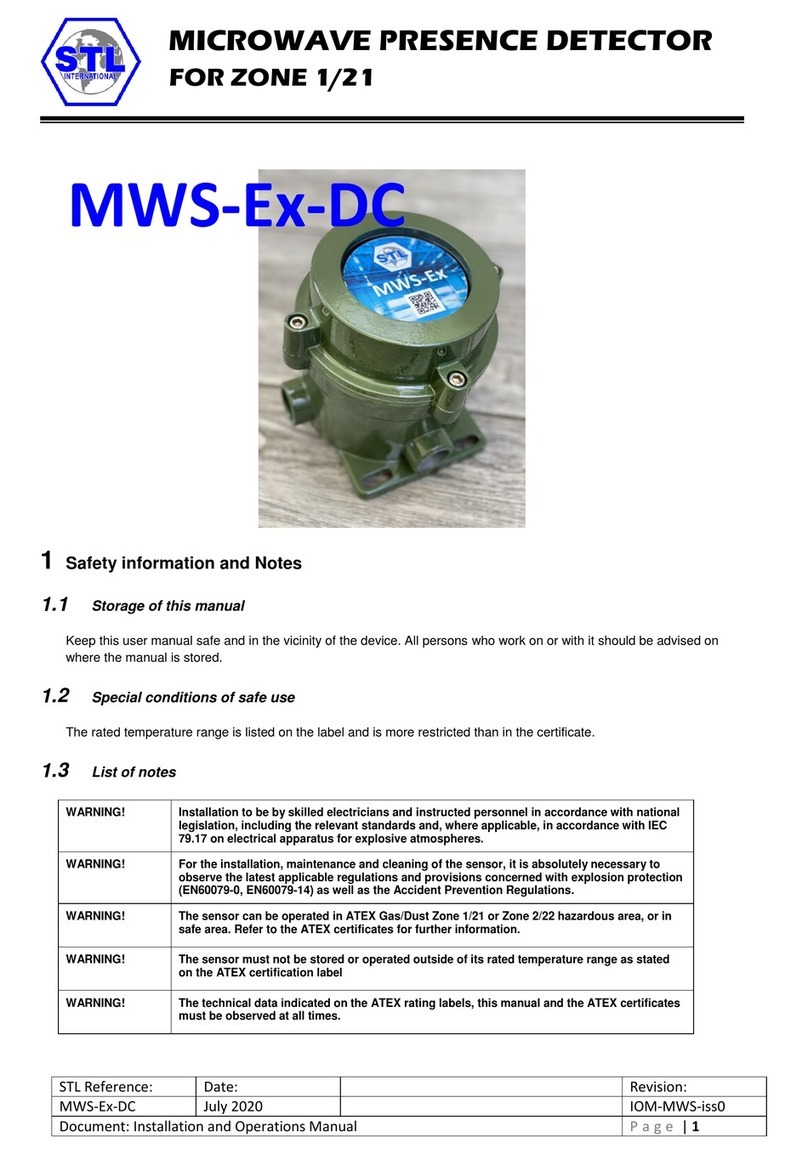
STL
STL MWS-Ex-DC quick start guide
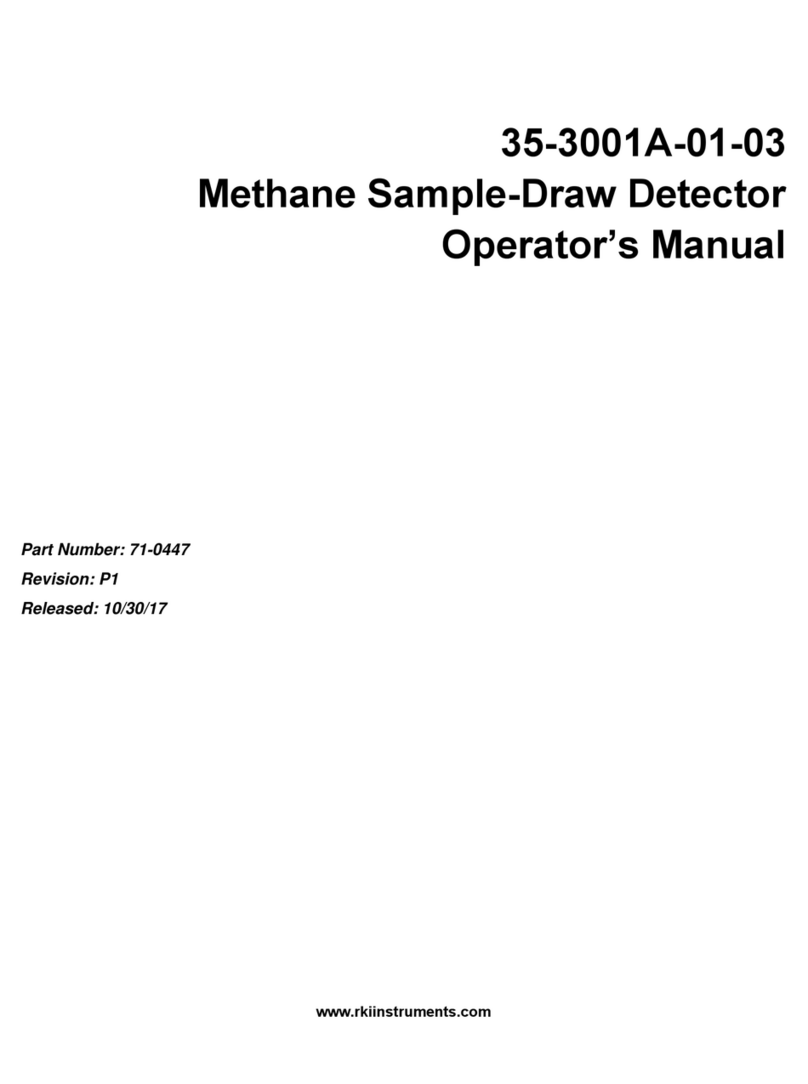
RKI Instruments
RKI Instruments 35-3001A-01-03 Operator's manual

Draminski
Draminski MD2 manual
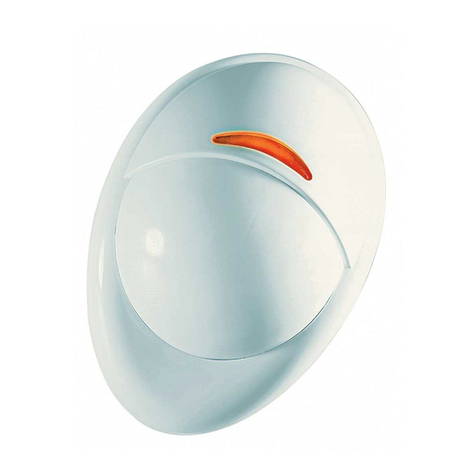
Visonic
Visonic NEXT PIR MCW installation instructions

Climax Technology
Climax Technology SDCO-1-F1 Series introduction

New Cosmos Electric
New Cosmos Electric KS-7O instruction manual
